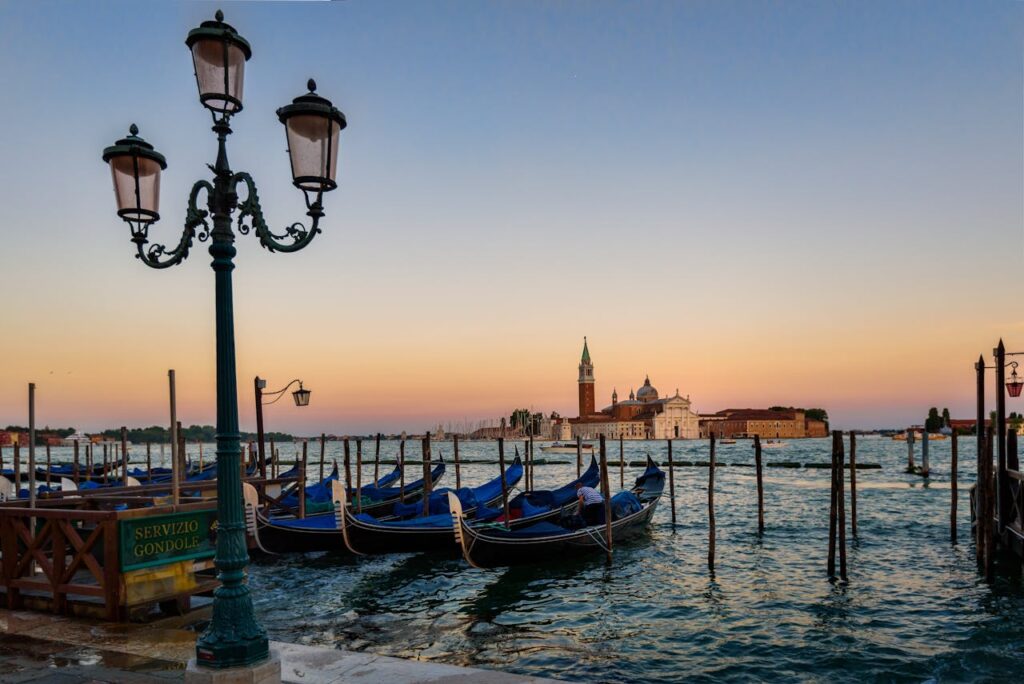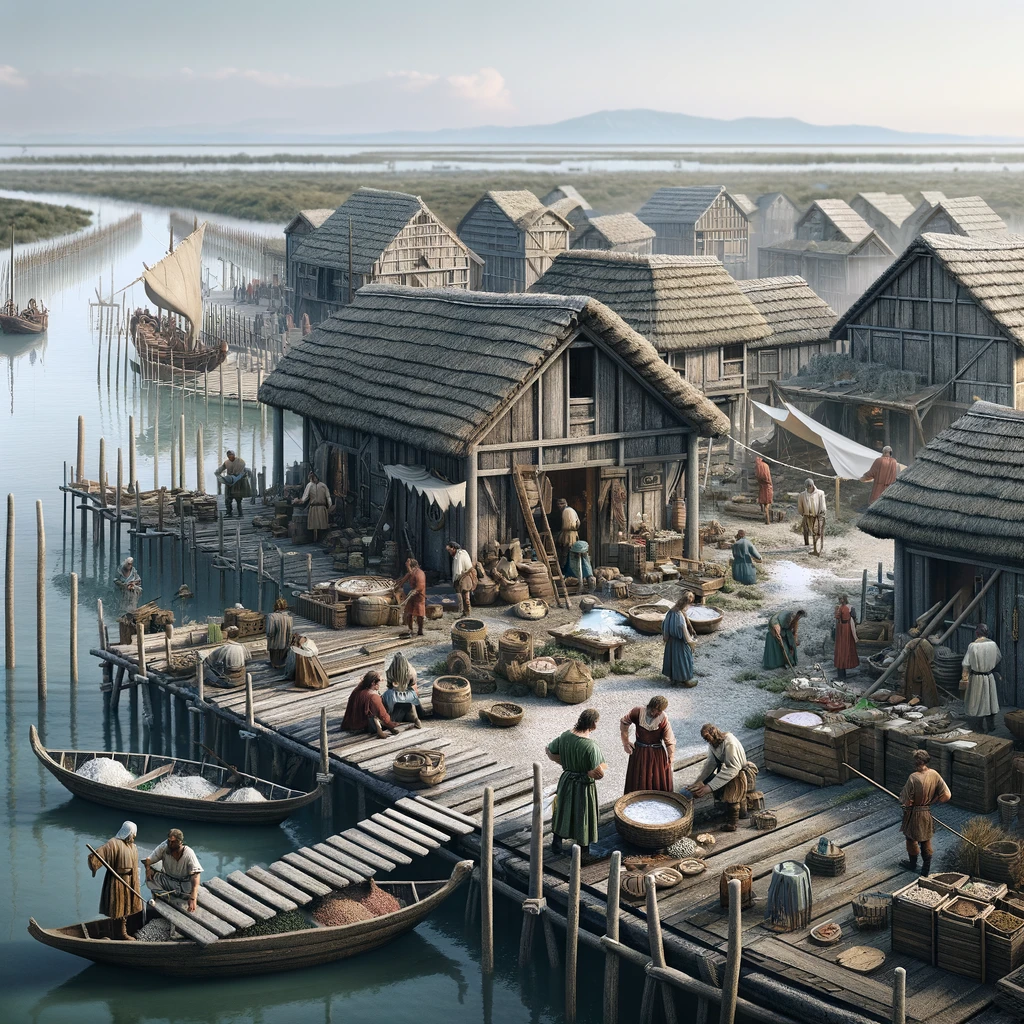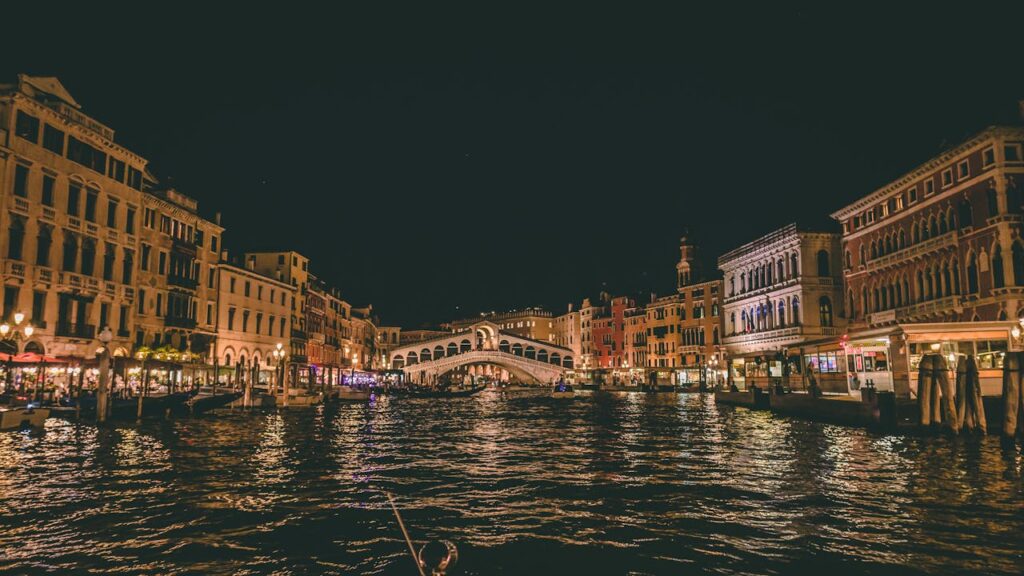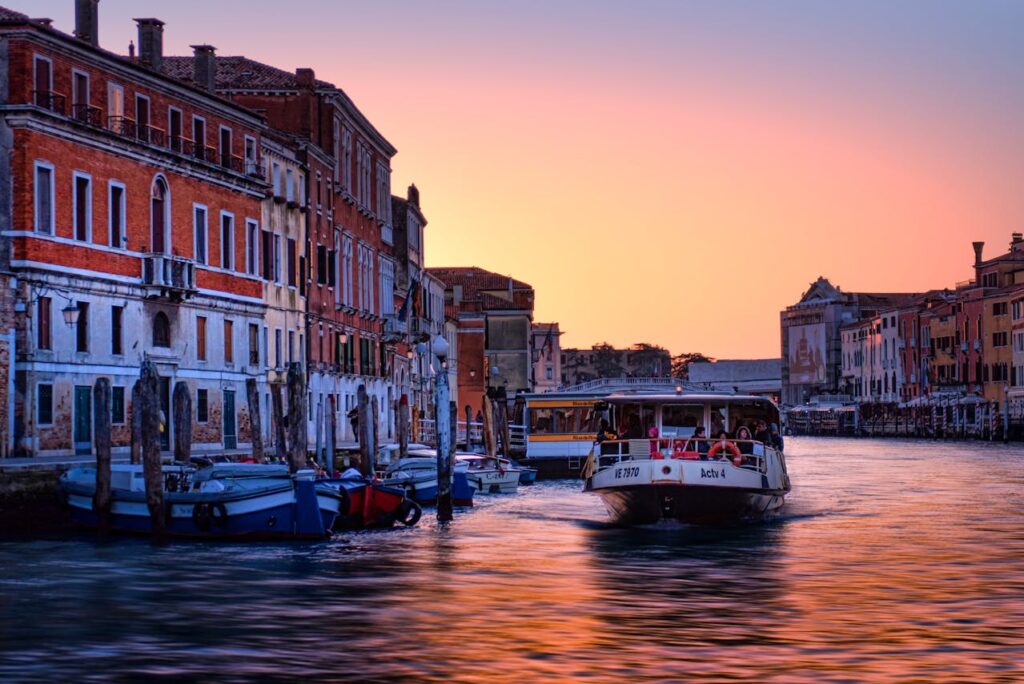Venice is the City of Canals, a standing eloquent testimony to human imagination and enterprise. This is a city in which history itself, more than in others, seems to have taken shape within the built fabric, giving it an almost otherworldly presence. So how did Venice come to be the marvel it is today? In this article, let us set on a journey into the past of Venice, its stories of ambition, artistry, and adventure that combines to make this iconic city the reality it is today.
A few statistics about Venice
The city of Venice, which still lives in the hearts of millions of people and has had a great past, is documented in history. At its peak in the 15th century, history points out that the Venetian Republic had a very imposing navy of around 3,000 ships, making it the greatest maritime force in the Mediterranean. Venice today is a hotspot for tourism, with around 25 million tourists visiting per year, with some 60,000 flocks of tourists each day. These tourists add to the environmental problems the city is facing, with phenomena such as ‘acqua alta’ or high tide. In 2019, Venice experienced one of the worst floodings in over 50 years when the water level rose to 187 centimeters above normal, causing considerable damage. All these statistics underline the historical significance of Venice and the contemporary challenges that the city is under because of tourism and climate change.
Sources:
- Venetian Navy Historical Data
- Venice Tourist Statistics
- Acqua Alta Record Levels
- Venice Flooding Impact

History of Venice, the Beginnings: From Lagoon to Livelihood
The Early Settlers
Venice’s origins are deeply rooted in the turmoil and upheaval of the 5th century. During this period, the Western Roman Empire was in decline, leading to widespread instability across the region. The once formidable empire was being overrun by various barbarian tribes, including the Visigoths, Ostrogoths, and Huns. These invasions were relentless, causing devastation and displacement among the Roman population.
Reasons for Seeking Refuge in the Lagoon
The inhabitants of the mainland, particularly those from the Roman cities of Aquileia, Padua, and Altinum, were forced to flee from the barbarian onslaught. The lagoon, with its marshy and mosquito-infested waters, provided a natural refuge that was difficult for invaders to navigate. The primary reasons for seeking refuge in the lagoon were:
- Safety from Invasions: The lagoon’s geographical features offered protection against the barbarian tribes who found it challenging to traverse the swampy and intricate waterways.
- Strategic Isolation: The lagoon’s isolation helped the settlers to stay away from the main routes used by the invading forces, providing a strategic advantage.
- Natural Barriers: The marshy environment acted as a natural barrier, preventing easy access to the fledgling communities and thus offering a safer haven for those escaping the turmoil on the mainland.
Challenges Faced by the Settlers
Adapting to life in the lagoon posed significant challenges for the early settlers:
- Harsh Environmental Conditions: The marshes were inhospitable, with high humidity, frequent flooding, and infestations of mosquitoes that brought diseases.
- Scarcity of Resources: The lagoon environment lacked fertile land for agriculture, making it difficult to sustain a large population.
- Building Infrastructure: Constructing stable buildings on the soft, muddy ground was a formidable task, requiring innovative engineering solutions.

Adapting to the Marshy Environment
Despite these challenges, the settlers demonstrated remarkable resilience and ingenuity:
- Building Foundations: They developed a unique method of driving wooden piles into the ground to create stable foundations for their buildings. Over time, these piles became petrified, forming a solid base that could support stone structures.
- Fishing and Salt Production: The settlers relied on fishing and salt production as their primary means of sustenance. The lagoon’s abundant marine resources provided a steady food supply.
- Trade and Commerce: They began to engage in trade with nearby regions, exchanging salt, fish, and other local products for goods they could not produce themselves. This trade laid the groundwork for Venice’s future as a major commercial hub.
Establishing a Community
The initial steps towards establishing a community included:
- Constructing Basic Shelters: The settlers built rudimentary shelters using available materials such as wood and reeds.
- Forming Alliances: They formed alliances with other refugee groups and local tribes, creating a network of mutual support and protection.
- Developing Governance: Early forms of self-governance emerged, with community leaders making decisions that affected the entire population. This laid the foundation for the complex political system that would later characterize the Venetian Republic.
Historical Context of the 5th Century
The 5th century was marked by the fragmentation of the Roman Empire and the rise of barbarian kingdoms. The Visigoths sacked Rome in 410 AD, and the Huns, led by Attila, ravaged much of Northern Italy in the mid-5th century. These invasions led to widespread fear and uncertainty, driving many to seek safety in remote and less accessible areas such as the Venetian lagoon.
The impact of these invasions was profound, leading to the collapse of Roman infrastructure and institutions in the region. The power vacuum left by the retreating Romans was quickly filled by various barbarian groups, each vying for control. This period of chaos and conflict set the stage for the emergence of new societies and political entities, including the fledgling communities that would eventually coalesce into the city of Venice.
Through resilience, adaptability, and strategic use of their unique environment, the early settlers of Venice laid the groundwork for what would become one of the most remarkable cities in history. Their legacy is reflected in the city’s enduring architecture, cultural richness, and historical significance.
The Golden Age of Venice: Trade, Wealth, and Power
Advent of the Merchant Class
It had been a peak power in the maritime trade of the Middle Ages, where it found itself as a major hub for the trade in goods between the Byzantine Empire and Europe, as well as the Islamic World. This makes the merchants of Venice the talk of the day when it comes to trading in commodities which range from spices, silk, and precious stones to art.
- Trade Routes: Venice held the key sea routes in the Mediterranean and extended its influence to the Black Sea and beyond.
- Commercial Innovation: The construction of the Fondaco dei Tedeschi, a giant trading depot, and the invention of the bill of exchange truly brought the Venetians into the big leagues.
Flourishing of Artistic and Cultural Life
History counts for trade, politics, but also for the cultural and artistic magnificence in Venice: the wealth of the city provided for a Renaissance in art, architecture, and literature. Venetian artists made timeless masterpieces of beauty that survive today in the works of Titian, Tintoretto, and Veronese to fascinate lovers of art.
- Architectural Marvels: St. Mark’s Basilica, the Doge’s Palace, and the Rialto Bridge tell of Venetian grandeur.
- Literary Contributions: In Venetia, the transactions of printing and publishing were placed; the principal contribution was made by Aldus Manutius, the revolutionizer of the printing book concept.

The Decline: War, Plague and Political Upheaval
The Ottoman Threat
It was in the 16th century that Venice began to decline. The gradual encroachment of the Ottoman Empire was a serious threat to the Venetian trade routes and territorial possessions. The year 1571 brought the Battle of Lepanto, won by him against the Ottomans, yet it did not reverse the overall tide.
Black Death and Economic Hardships
The plague had ravaged at Venice in the 14th and 17th centuries, causing great mortality and lurking economic decline. These denting epidemics came on top of different problems facing the city, such as the intensification of the rising competition for the resources of the city by the newly emerging Atlantic powers of Portugal and Spain.
The Fall of the Republic
By the late 18th century, the political arrangement of Venice was failing to keep pace with the currents of times and the changing wave of Europe. In 1797, with the conquest of Napoleon Bonaparte, the history of the Venetian Republic came to an end after the city was given to the Austrian Empire. The mighty maritime republic had fallen and in the eyes of all Europe turned into a pawn in the elaborate geopolitical chess.
Table 1: Historical and Key Facts of Venice
| Historical Period | Details |
|---|---|
| 5th Century | Founding of Venice by inhabitants fleeing barbarian invasions. |
| 15th Century | Venice at its peak with a formidable navy of about 3,000 ships. |
| 16th Century | Beginning of decline due to the expansion of the Ottoman Empire. |
| Late 18th Century | Fall of the Venetian Republic with Napoleon’s conquest in 1797. |

Venice in the Modern World: City of Tourism and Preservation
The Austrian and Italian Period
The entrance of Venice into the Austrian Empire and then later into the Kingdom of Italy was enormous change. Through this, the strategic and economic importance of the city slowly abated, while the cultural and historical fascination never changed. It became the emblem of unification for Italy and a cradle of national pride.
Arrival of Tourism
It was transformed in the 20th century into one of the world’s greatest tourist centers. Globally, the Venice Biennale and the Venice Film Festival, founded in 1932, put the city at the cultural cutting edge. Nowadays, millions come each year to Venice out of its historical charm and artistic heritage.
Challenges and Conservation Efforts
Today, Venice faces ruination from mass tourism and environmental decay with high sea levels. Efforts toward preserving the city’s peculiar character and against flooding have been numerous, including the MOSE project, which is a series of barrier gates lying at the seaward entrance to the lagoon that has an appearance of permanence.
- Environmental Initiatives: What follows are some measures to reduce the negative impact of tourism and ensure the lagoon ecosystem carries on to the long-term sustainability of Venice.
- Cultural Preservation: Such restoration projects literally keep alive the architectural treasures the city boasts and maintain active cultural scenes around them.
Table 2: Modern Challenges and Tourism in Venice
| Aspect | Statistics and Details |
|---|---|
| Annual Tourist Visits | Approximately 25 million visitors per year. |
| Daily Tourist Influx | Around 60,000 tourists flock to the city each day. |
| Acqua Alta (High Tide) | In 2019, water levels reached 187 centimeters above sea level during one of the worst floods in over 50 years. |
| Environmental Efforts | Initiatives include the MOSE project to mitigate flooding and preserve the lagoon ecosystem. |
Frequently Asked Questions
Where do you come from, Venice?
370 – The 5th century after the tides of the barbarians that made people on the mainland flee to the lagoon island for refuge is when Venice was established. The favorable positioning of the city, therefore, was the source of its growth into the most prominent city of commerce and, later, the Venetian Republic.
How did Venice get so rich?
The wealth of Venice came from its supremacy in sea-borne trade, controlling vital maritime links between Europe and the East. Commercial innovations and the creation of important emporia were two important elements constituting that economic torrent.
What really caused the decline of Venice?
Among the reasons for Venice’s decline are the rise of the Ottoman Empire, the Black Death, and the economic competition from the emerging powers of the Atlantic, in addition to the final blow of Napoleon Bonaparte’s overthrow.
By what is Venice saving its heritage?
Venice has engaged in deep and wide cultural expressions in the areas of restoration, environmental activities with MOSE project, and even the handling of the effects of tourism. Cultural heritage is also seen in cultural events in Venice, such as the Biennale and the Venice Film Festival.
Conclusion
Venice’s history is rather the history of wins and losses, the story that permeates centuries of human labor and endurance. Out of these humble, swampy beginnings, Venice grew to be one of the great maritime empires and, in so many ways, the city which remains a world away. Indeed, its narrow lanes are redolent of timeless harmony and true character, features that have described the history of Venice. Indeed, the charm and inspiration of Venice to generations in perpetuity shall be assured by continued preservation with due respect warranted by its unique heritage.
